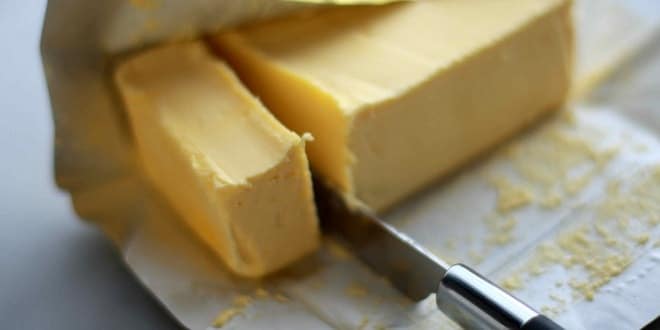Soybean
SOYBEAN
BOTANICAL DESCRIPTION
Family :Leguminoceae
sub-family :Papilionoideae
:Fabaceae
Common Name :
Scientific Name : Glycine max-Linn
Origin:
Domestication of soybean has been traced to the eastern half of North China in the eleventh century B.C. or perhaps a bit earlier soybean production was localized in China until after the Chinese-Japanese war of 1894-95.
SEASON AND CLIMATE
Two cropping seasons of soybean kharif and spring.
It is self pollinated crop. In case of kharif season most common time of sowing is onset of monsoon or last week of June to first week of July while spring sowing is done between 15th of February and 15th of March.
Soybean has been adopted under wide range of climate and soil with better performance under Vertisols with good organic content.
The crop requires about 60-65 cm annual rainfall drought at flowering or just before flowering results in flower and pod drops, while rains during maturity impairs the grain quality of soybean harmful.
CROP DESCRIPTION
Despite being rich source of protein, it is categorized as an oilseeds rather than a pulse crop.
Oil contents varies from 15 to 21 % in soybean seeds.
Crop generally reach a height of around 1 m (3.3 ft).
Capable of transforming nearly 60-100 kg atmospheric nitrogen into 30-40 kg nitrogen in the soil.
GLOBAL SCENARIO OF SOYBEAN (2013-2016)
NATIONAL SOYBEAN SCENARIO (2013-16)
AREA, PRODUCTION AND YIELD TRENDS OF SOYBEAN IN INDIA
POTENTIAL DISTRICTS (60) OF SOYBEAN
STATE WISE YIELD GAP UNDER FLDs (IN KHARIF)
POPULAR VARIETIES OF SOYBEAN
PACKAGE AND PRACTICES
Moist alluvial / vertisols are best.
Deep ploughing in summer to expose insect/pests to sunlight.
Use of well de-composed FYM – 5-10 tonnes/ha.
Recommended doses of fertilizers @ 20: 40: 40:30 Kg N: P: K: S / ha.
Optimum sowing time is mid of June subject to availability of moisture/rainfall.
Optimum seed rate of 75 Kg/ha for small seeded varieties and 100 Kg/ha for bold seeded varieties.
Adoption of varietal cafeteria approach rather than monoculture for risk management.
Seed treatment with Rhizobium / PSB and Carbendazim/Thiram/Thiamethoxam.
Application of pre-emergence weedicides followed by inter-culture operations.
Adoption of Broad-Bed-Furrow/Ridge-Furrow System for effective water management.
Inter-cropping of soybean with arhar for risk management.
Insect Pests:
Use of resistant varieties.
Stem-fly : JS 335, PK 262, NRC 12, MACS 124.
Defoliators: NRC 7, NRC 37, JS 80-21, Pusa 16, Pusa 20, Pusa 24, PS 564, PK 472,
Girdle Beetle : JS 71-05,
Soybean Rust : JS 80-21, PK 1029, PK 1024, Indira Soya 9,
Collar-Rot: PK 262, PK 416, PK 472, PK 1042, NRC 37, Myrothecium Leaf Spot: Bragg, JS 71-05,
Bacterial Pustule: PK 416, PK 472, PS 564, Bragg,
Yellow Mosaic : PK 416, PK 472, PS 564, PK 1024, PK 1029, PS 1042, PS 1092, SL 295.
For the control of Yellow Mosaic Virus (YMV) disease, spray of methyl dematon 25EC @ 0.8 l/ha or Thiomethoxam 25WG @ 100 g/ha is recommended for the control of vectors.
One spray of microbial pesticides (Dipel /Biobit /Dispel) followed by spray of chemical insecticide after 15 days for the control of defoliators.
In rust prone areas, prophylactic sprays of Hexaconazol, Propiconazol, Triadimefon @ 0.8 kg/ha is recommended.
For the management of foliar diseases two sprays of Carbendazim or Thiophenate methyl @ 0.5 kg/ha at 35 and 50 days after sowings.
MSP Vs MARKETING PRICE
EXPORTS / DEMAND
NUTRITIVE VALUE
chemical composition of soybean seed which includes about 20% oil and 40% protein.
The soybean contain very little of starch (4.66-7%) and quite a lot of Hemicellulose and Pectins.
Protein of soybean products characterized much quantity lysine (2.56), Tryptophan (0.52), Isoleucine, Valine and Threonine (1.54) however sulphuric amino acids are less than in protein of rape products.
Number of Nutraceutical compounds such as Isoflavons, Tocopherol and lecithin has made it one of the most valuable agronomic crops in the world.
RESEARCHABLE ISSUES
Resistance varieties for Yellow Mosaic Virus.
Short duration varieties for dry land areas
Varieties with low linolenic fatty-acid to improve the shelf life of soybean oil.
Varieties with less beany flavours and Lipoxygenase (enzyme) lacking varieties (Kyushu-III-Japan) for increasing domestic consumption of Protein Rich Soya Foods.
Varieties with bold pods/seeds for use as vegetable.
Technology for safe storage and transport of soybean seed without loss of seed viability.
ISSUES / ACTIONABLE POINTS
Development of resistance varieties for Yellow Mosaic Virus.
Development of short duration varieties for dry land areas
Varieties with low linolenic fatty-acid to improve the shelf life of soybean oil.
Varieties with less beany flavours and Lipoxygenase (enzyme) lacking varieties (Kyushu-III-Japan) for increasing domestic consumption of Protein Rich Soya Foods.
Varieties with bold pods/seeds for use as vegetable.
Technology for safe storage and transport of soybean seed without loss of seed viability.
…

